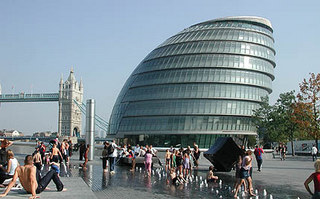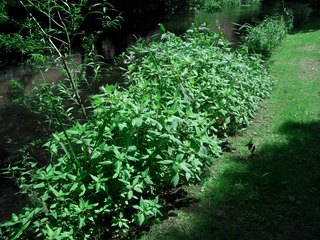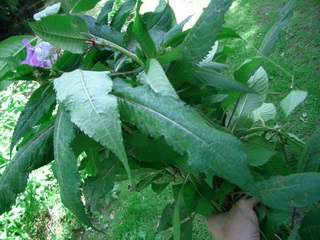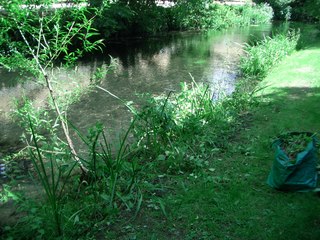The other day, Erica and I rammed our policy wonks’ hats firmly on our heads, and took part in a Water Framework Directive workshop with the Environment Agency at City Hall:
(image: www.galinsky.com )
As it turned out, we didn’t learn nearly as much as we hoped – about how the Directive will apply to the Wandle, for instance – but we did make what we like to think of as a few wise suggestions for implementation (like, why not reverse the usual legal burden of proof so that anyone discharging anything into any watercourse has to prove they’re not causing pollution – rather than the other way about?)
Apparently the first draft of the Thames River Basin Plan will be available for commentary in December, so we’ll keep the rest of our powder dry till then…
After that, it was back to work for quite a few days – so by the time the next weekend rolled round I was good and ready to hit the river and do some real habitat work.
Down on the Hackbridge stretch of the Wandle there was a patch of Himalayan Balsam I’d been watching for a while, and it felt like the time to strike was now.
Personally, I’ll always associate the sweet scent of pale pink-and-white Himalayan Balsam with long summer evenings rowing on the Wear in Durham. But sentiment aside, it’s actually a deeply invasive species that arrived in the UK as a Victorian plantsman’s exotic trophy before hopping over the garden wall to cover riverbanks the length and breadth of Britain.
Like so many other invasive species, it also doesn’t play nicely with the natives, in this case shading them out with dense stands of foliage that can grow to 8 feet high before dying back completely in winter, leaving the bare, rootless riverbanks very vulnerable to erosion.
And it spreads, too, with cleverly spring-loaded seed-pods that explode when you touch them, scattering the floating seeds (up to 800 per plant) far and wide.
On one level, you’ve got to admire Himalayan Balsam for its sheer Darwinian determination to survive and thrive.
But admiration doesn’t have to mean liking, or that you want it on your river. In years to come, we’re actually hoping to push it downstream and out of the Wandle catchment completely. So this lot had to go, and go now, before it had a chance to set seed again this year.
Fortunately its hefty stems are shallow-rooted and pull up easily…
It mulches easily and safely too – at least before the seeds set.
And here’s what the native riparian fringe looks like after it’s been saved from the triffid horde: emergent in more ways than one:
Maybe one or two more assaults on this stretch, next year and the year after, and it’ll all be gone.
Phew, just in time…




